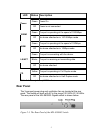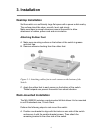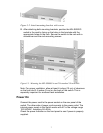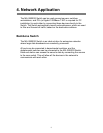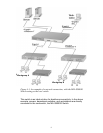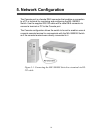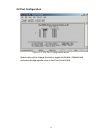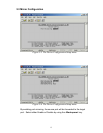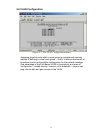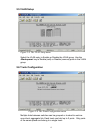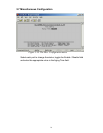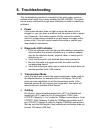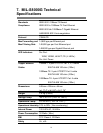
17
6. Troubleshooting
This troubleshooting section is intended to help solve many common
problems that might occur when installing the MIL-S8000G. The switch
can be easily monitored through panel indicators to assist in identifying
problems.
Power
If the power indicator does not light up when the power cord is
plugged in, you may have a problem with the power outlet or power
cord. However, if the switch powers off after running for awhile,
check for loose power connections, power losses or surges at the
power outlet. If you still cannot resolve the problem, contact your
local dealer for assistance.
Diagnostic LED Indicator
1. If the link indicator does not light up after making a connection,
check whether the network interface (e.g., a network adapter
card on the attached device), network cable, or switch port is
defective or not.
2. Verify that the switch and attached device are powered on.
3. Be sure the cable is plugged into both the switch and the
corresponding device.
4. Verify that the proper cable type is used and its length does not
exceed specified limits (100 meters).
Transmission Mode
Verify that each port is set to the same transmission mode used by
the attached device, for example Half or Full-Duplex. The RJ-45
ports use auto-negotiation to set the transmission mode. If the
attached devices do not support auto-negotiation, the switch will
assume the port operates at half duplex.
Cabling
RJ-45 ports: Use unshielded twisted-pair (UTP) or shielded and
twisted pair (STP) cable for RJ-45 connections: 100Ω 2-pair
UTP/STP Category 3, 4 or 5 cable for 10Mbps connections or 2-pair
UTP/STP 100Ω Category 5 cable for 100Mbps connections and 4-
pair UTP/STP Category 5 cable for Gigabit 1000Mbps connections.
Also be sure that the length of any twisted-pair connection does not
exceed 100 meters (328 feet).



